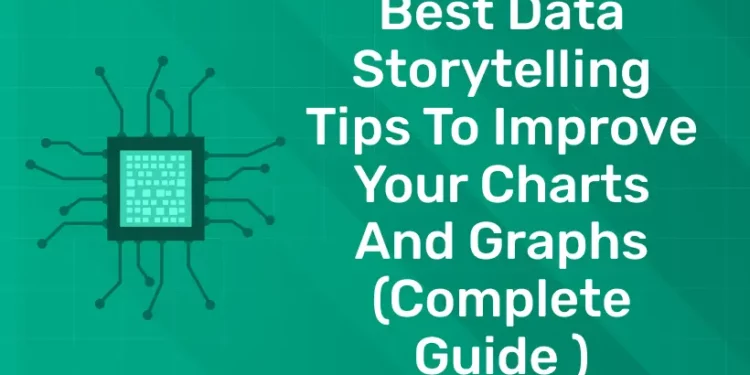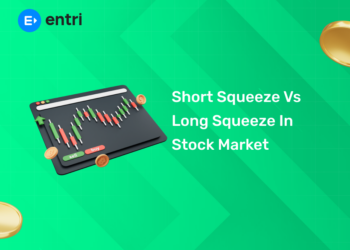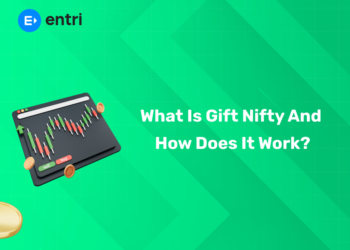Table of Contents
Data storytelling is a modern approach that organizations employ to bring data to life and motivate stakeholders to take action. It is possible to turn abstract statistics into fascinating, palpable, and easily understood concepts by using storytelling to turn data into a convincing story backed by eye-catching visuals. Additionally, the likelihood that the audience will behave as you desire increases when they genuinely understand what is being said.
We come across a plethora of distinct graphs when it comes to data storytelling. Both discovered common mistakes (some things to avoid!), as well as techniques for efficient application through our work. This tutorial will demonstrate that anyone can become a skilled data storyteller, especially with the readily available data technology tools that allow facts to be transformed into an almost infinite number of different storylines.
Ready to take your data science skills to the next level? Sign up for a free demo today!
Introduction
Reporting on the findings of data analysis with a chart or Power Point presentation is only one aspect of data storytelling. Data storytelling, on the other hand, outlines the entire process of gathering data, utilising analytics to extract insights from it, and then turning those insights into a narrative that is centred on people and is visually represented.
A narrative is a sequence of occurrences or feelings, usually with human or non-human characters. It may be fictitious or based on actual events. Stories almost invariably feature a primary conflict, challenge, or other form of tension that holds the audience’s attention until the situation is (usually, but not always) resolved.
Three essential elements are included in data storytelling:
- The story: An account that conveys data-driven insights in an effort to persuade the audience to act in a particular way. This may be delivered verbally or in writing.
- The data: A precise and unblemished set of information that has been carefully examined through the application of descriptive, predictive, and prescriptive analytics in order to obtain understanding and bolster the story.
- The visuals: Data representations in the form of charts, graphs, diagrams, images, and videos that aid in telling the story and engaging viewers.
The Benefits of Data Storytelling
Executives in business are starting to understand the importance of data storytelling. The overwhelming majority (93%) of 500 corporate executives and data experts who participated in a poll on data storytelling agreed that “decisions made as a result of successful data storytelling have the potential to help increase revenue.” Additionally, 92% of them responded in the affirmative when asked if data storytelling was useful for drawing conclusions from data.
- Engage the audience: People are more drawn to pictures than to words or spoken words. Associating pictures with facts has been shown in numerous studies over the years to increase student engagement and retention of provided material.
- Make it simpler to remember the important points: Presenting complicated topics to audiences without technical knowledge is made possible by data storytelling, since the human brain processes visual content more efficiently than numerical information. Additionally, technology makes it simpler to compile pertinent data, notice trends and patterns, and then visualise it all into an instantly comprehensible narrative for viewers.
- Encourage action: An effective data story gives the audience information that motivates them to take action. Tailoring data narrative to the intended audience increases the data’s.
Ready to take your data science skills to the next level? Sign up for a free demo today!
Data stories vs. Data visualizations
Data visualisations and data stories are frequently contrasted. But in reality, data visualisations are only one component of data storytelling; they serve as an aid in telling a larger tale.
Data storytelling will depends on issue experience and communication skills to help fashion the data analysis and visualisations into something that can explain how of a larger tale. While data visualisations undoubtedly help communicate various points in a narrative, data storytelling also depends on these skills.
For example, you could make a number of data visualisations showing how a certain product line’s sales have changed over time. The sales trend may be changing, as the visualisations suggest, but a data story would help you contextualise this within larger themes like marketing campaigns or supply chain limitations that limit inventories.
Tips to Improve Your Charts and Graphs
1: Which of the following algorithms is most suitable for classification tasks?
1. Eyes don’t follow a specific order
- Reading a chart or graph differs from reading a text page in the first place because, in Western culture, you read in order from left to right and top to bottom. With the second, you just follow your eyes wherever they lead you. There is no set sequence.
- There is also a difference in the pace. You flip over the text, spending more time on some passages than others, as opposed to reading it slowly, line by line.
- This implies that designing powerful visualisations that purposefully lead viewers through a predetermined visual journey is particularly difficult.
2. Eyes first focus on what they finds out
- This graph’s peak on the far right is the first feature that jumps out. This image conveys a very obvious message: since the 1970s, the rate of incarceration in the United States has climbed dramatically.
- By designing charts and graphs with a single, easily understandable message, the most skilled data storytellers capitalise on this idea.
3. Eyes can handle a few things at once
- A graph or chart with more than five to ten variables loses its individuality and appears to our eyes as a single unit whenever there are more than ten variables.
- You’ll see that there isn’t a clear message here if the goal of the declarative chart (as opposed to the exploratory one) is to deliver a clear message.
- For instance, if you wanted to show that performance ratings dropped even after the outage, the viewer would have to look very closely to see this trend since the backdrop peak would be too distracting from the green line.
- In this instance, it would be advisable to ignore the statistics on customer support calls and instead concentrate on customer service ratings both before and after the outage.
4. Try to find meaning in the data
- Our brains are made to instantly search for connections and attempt to interpret the data, which is another crucial truth.
- Examining this chart will reveal that your mind automatically associates the orange in the title with the orange-hued dots.
5. Guided by cultural conventions
- There are several customs that we consider standard. For instance, everyone in Western society intuitively understands that time flows from left to right rather than from right to left, or that red indicates heat and blue indicates cold.
- Visual metaphors are no different: we all identify a scale with a comparison of two objects or a pyramid with a hierarchy.
- It should go without saying that your pictures will be difficult to understand if you disregard these rules.
🚀 Start Coding Today! Enroll Now with Easy EMI Options. 💳✨
Equip yourself with in-demand skills to land top-tier roles in the data-driven world.
Start Learning Now with EMI OptionsFrequently Asked Questions
How do you tell a story with charts and graphs?
Select graphic styles that bolster your narrative in order to create visually compelling data stories for viewers. Flow charts show an event sequence as it happens across time. With scatter plots, relationships between variables are compared.
What are storytelling techniques in data visualization?
To create an engaging narrative, data storytelling employs a variety of data visualisation tools, such as scatter plots, geographic maps, timelines, line graphs, pie charts, bar charts, heat maps, and tree charts.
What are the key elements of data storytelling?
Data visualisation and data storytelling combine in an organised manner to convey your insights through three key components: story, images, and data.











